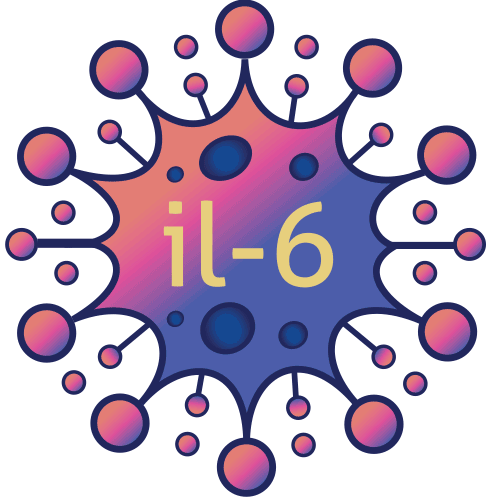How IL-6 Levels Are Measured
- From The Mind of AI

- Nov 17, 2024
- 3 min read
Updated: Dec 12, 2024

IL-6 levels are typically measured through blood tests that detect the concentration of IL-6 in the bloodstream. Measuring IL-6 levels involves:
Blood Draw: A blood sample is taken, usually from a vein in the arm.
Lab Analysis: The sample is analyzed in a laboratory using methods like enzyme-linked immunosorbent assay (ELISA) or polymerase chain reaction (PCR) to detect and quantify IL-6 levels.
Standardized Units: IL-6 levels are often measured in picograms per milliliter (pg/mL).
Additional Measurement Methods:
Saliva: In some cases, saliva samples are used as a non-invasive way to measure IL-6, though this method is less common and may be less accurate.
CSF (Cerebrospinal Fluid): IL-6 can also be measured in cerebrospinal fluid, but this requires a lumbar puncture, which is invasive and mainly used for research or diagnostic purposes in cases of central nervous system disorders.
Why It’s Difficult to Measure IL-6 Levels in the Brain
Measuring IL-6 levels specifically in the brain is challenging due to several factors:
Blood-Brain Barrier (BBB): The blood-brain barrier selectively prevents many substances, including IL-6, from freely moving between the blood and brain. Thus, IL-6 levels in the bloodstream may not accurately reflect IL-6 activity in the brain.
Invasive Methods Required: To directly measure IL-6 in the brain, cerebrospinal fluid (CSF) is collected through a lumbar puncture (spinal tap), which is an invasive procedure with potential risks, making it impractical for routine testing.
Localized IL-6 Production in Brain Regions: IL-6 levels in the brain can vary by region due to localized production in response to inflammation or other triggers. This means that even a CSF sample may not fully represent IL-6 levels throughout the brain.
Brain-Specific IL-6 Dynamics: IL-6 operates differently in the central nervous system compared to the peripheral bloodstream. In the brain, IL-6 influences neuro-inflammation and neural health, but peripheral measurements may not capture this localized activity.
Is Measuring IL-6 Easy?
Measuring IL-6 in the blood is relatively straightforward with a standard blood test, but there are challenges:
Transient Levels: IL-6 levels can fluctuate rapidly in response to stress, infection, exercise, or injury. This means a single measurement may not fully capture a person’s typical IL-6 level.
Cost and Accessibility: IL-6 testing is not always part of routine bloodwork and may require a specific request from a healthcare provider. The test may also be costly and not always covered by insurance.
What Constitutes High or Low IL-6 Levels?
IL-6 levels vary widely depending on the individual’s health status, age, and the presence of any infections or inflammatory conditions. General guidelines for IL-6 levels in the blood are:
Normal Range: In healthy individuals, IL-6 levels are generally low, often less than 1 pg/mL in the blood.
Elevated Levels: Levels above 5 pg/mL are typically considered elevated, though this can vary. Elevated IL-6 levels are often seen in inflammatory conditions, infections, autoimmune diseases, and chronic stress.
Very High Levels: Levels above 10–20 pg/mL may indicate significant inflammation, as seen in conditions like sepsis, severe infections, or autoimmune diseases. In some cases, levels can exceed 100 pg/mL during intense immune responses or in serious inflammatory conditions.
Summary
IL-6 Measurement: Blood tests using ELISA or PCR are common for measuring IL-6 levels in the body. CSF measurements are rare and invasive, mostly used in research.
Challenges for Brain Measurement: The blood-brain barrier, need for invasive sampling, and regional variations in brain IL-6 production make it difficult to measure IL-6 in the brain.
Normal vs. High Levels: Normal IL-6 levels are generally below 1 pg/mL, with elevated levels above 5 pg/mL indicating inflammation, and very high levels above 10–20 pg/mL suggesting serious inflammatory conditions.
While IL-6 is critical for understanding inflammation, measuring it to assess brain-specific inflammation remains challenging. Researchers are actively exploring less invasive biomarkers and imaging techniques that could help reflect central nervous system inflammation more accurately in the future.




Comments